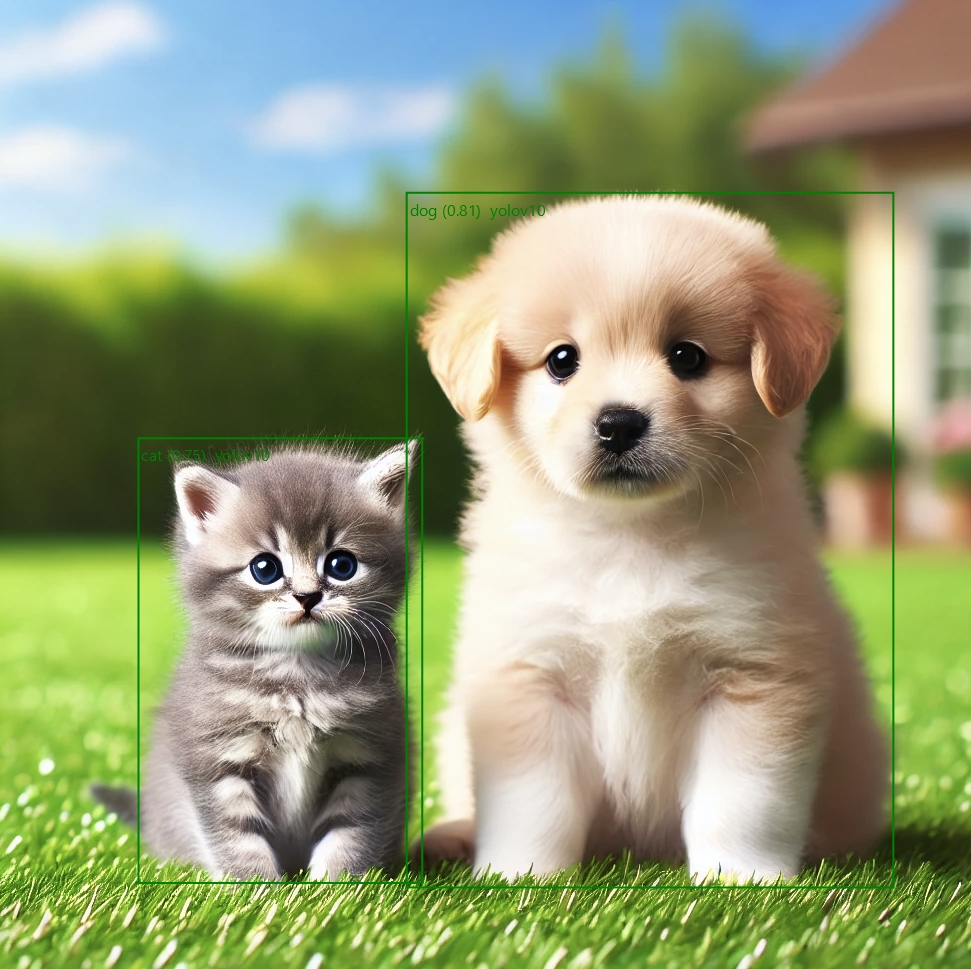this is a great library.
I need to implement inference for YoloX model but I'm having some trouble.
import os
import cv2
import numpy as np
import onnxruntime
import os
import cv2
import numpy as np
import onnxruntime
# Constants
INPUT_SHAPE = (640, 640) # Adjust this if needed
NMS_THRESHOLD = 0.45
SCORE_THRESHOLD = 0.4
# Replace COCO_CLASSES with your class names
CLASS_NAMES = []
_COLORS = np.array(
[
0.000, 0.447, 0.741,
0.850, 0.325, 0.098,
0.929, 0.694, 0.125,
0.494, 0.184, 0.556,
0.466, 0.674, 0.188,
0.301, 0.745, 0.933,
0.635, 0.078, 0.184,
0.300, 0.300, 0.300,
0.600, 0.600, 0.600,
1.000, 0.000, 0.000,
1.000, 0.500, 0.000,
0.749, 0.749, 0.000,
0.000, 1.000, 0.000,
0.000, 0.000, 1.000,
0.667, 0.000, 1.000,
0.333, 0.333, 0.000,
0.333, 0.667, 0.000,
0.333, 1.000, 0.000,
0.667, 0.333, 0.000,
0.667, 0.667, 0.000,
0.667, 1.000, 0.000,
1.000, 0.333, 0.000,
1.000, 0.667, 0.000,
1.000, 1.000, 0.000,
0.000, 0.333, 0.500,
0.000, 0.667, 0.500,
0.000, 1.000, 0.500,
0.333, 0.000, 0.500,
0.333, 0.333, 0.500,
0.333, 0.667, 0.500,
0.333, 1.000, 0.500,
0.667, 0.000, 0.500,
0.667, 0.333, 0.500,
0.667, 0.667, 0.500,
0.667, 1.000, 0.500,
1.000, 0.000, 0.500,
1.000, 0.333, 0.500,
1.000, 0.667, 0.500,
1.000, 1.000, 0.500,
0.000, 0.333, 1.000,
0.000, 0.667, 1.000,
0.000, 1.000, 1.000,
0.333, 0.000, 1.000,
0.333, 0.333, 1.000,
0.333, 0.667, 1.000,
0.333, 1.000, 1.000,
0.667, 0.000, 1.000,
0.667, 0.333, 1.000,
0.667, 0.667, 1.000,
0.667, 1.000, 1.000,
1.000, 0.000, 1.000,
1.000, 0.333, 1.000,
1.000, 0.667, 1.000,
0.333, 0.000, 0.000,
0.500, 0.000, 0.000,
0.667, 0.000, 0.000,
0.833, 0.000, 0.000,
1.000, 0.000, 0.000,
0.000, 0.167, 0.000,
0.000, 0.333, 0.000,
0.000, 0.500, 0.000,
0.000, 0.667, 0.000,
0.000, 0.833, 0.000,
0.000, 1.000, 0.000,
0.000, 0.000, 0.167,
0.000, 0.000, 0.333,
0.000, 0.000, 0.500,
0.000, 0.000, 0.667,
0.000, 0.000, 0.833,
0.000, 0.000, 1.000,
0.000, 0.000, 0.000,
0.143, 0.143, 0.143,
0.286, 0.286, 0.286,
0.429, 0.429, 0.429,
0.571, 0.571, 0.571,
0.714, 0.714, 0.714,
0.857, 0.857, 0.857,
0.000, 0.447, 0.741,
0.314, 0.717, 0.741,
0.50, 0.5, 0
]
).astype(np.float32).reshape(-1, 3)
def preprocess(img, input_size, swap=(2, 0, 1)):
if len(img.shape) == 3:
padded_img = np.ones((input_size[0], input_size[1], 3), dtype=np.uint8) * 114
else:
padded_img = np.ones(input_size, dtype=np.uint8) * 114
r = min(input_size[0] / img.shape[0], input_size[1] / img.shape[1])
resized_img = cv2.resize(
img,
(int(img.shape[1] * r), int(img.shape[0] * r)),
interpolation=cv2.INTER_LINEAR,
).astype(np.uint8)
padded_img[: int(img.shape[0] * r), : int(img.shape[1] * r)] = resized_img
padded_img = padded_img.transpose(swap)
padded_img = np.ascontiguousarray(padded_img, dtype=np.float32)
return padded_img, r
def demo_postprocess(outputs, img_size, p6=False):
grids = []
expanded_strides = []
strides = [8, 16, 32] if not p6 else [8, 16, 32, 64]
hsizes = [img_size[0] // stride for stride in strides]
wsizes = [img_size[1] // stride for stride in strides]
for hsize, wsize, stride in zip(hsizes, wsizes, strides):
xv, yv = np.meshgrid(np.arange(wsize), np.arange(hsize))
grid = np.stack((xv, yv), 2).reshape(1, -1, 2)
grids.append(grid)
shape = grid.shape[:2]
expanded_strides.append(np.full((*shape, 1), stride))
grids = np.concatenate(grids, 1)
expanded_strides = np.concatenate(expanded_strides, 1)
outputs[..., :2] = (outputs[..., :2] + grids) * expanded_strides
outputs[..., 2:4] = np.exp(outputs[..., 2:4]) * expanded_strides
return outputs
def nms(boxes, scores, nms_thr):
x1 = boxes[:, 0]
y1 = boxes[:, 1]
x2 = boxes[:, 2]
y2 = boxes[:, 3]
areas = (x2 - x1 + 1) * (y2 - y1 + 1)
order = scores.argsort()[::-1]
keep = []
while order.size > 0:
i = order[0]
keep.append(i)
xx1 = np.maximum(x1[i], x1[order[1:]])
yy1 = np.maximum(y1[i], y1[order[1:]])
xx2 = np.minimum(x2[i], x2[order[1:]])
yy2 = np.minimum(y2[i], y2[order[1:]])
w = np.maximum(0.0, xx2 - xx1 + 1)
h = np.maximum(0.0, yy2 - yy1 + 1)
inter = w * h
ovr = inter / (areas[i] + areas[order[1:]] - inter)
inds = np.where(ovr <= nms_thr)[0]
order = order[inds + 1]
return keep
def multiclass_nms(boxes, scores, nms_thr, score_thr, class_agnostic=True):
if class_agnostic:
return multiclass_nms_class_agnostic(boxes, scores, nms_thr, score_thr)
# else:
# return multiclass_nms_class_aware(boxes, scores, nms_thr, score_thr)
def multiclass_nms_class_agnostic(boxes, scores, nms_thr, score_thr):
cls_inds = scores.argmax(1)
cls_scores = scores[np.arange(len(cls_inds)), cls_inds]
valid_score_mask = cls_scores > score_thr
if valid_score_mask.sum() == 0:
return None
valid_scores = cls_scores[valid_score_mask]
valid_boxes = boxes[valid_score_mask]
valid_cls_inds = cls_inds[valid_score_mask]
keep = nms(valid_boxes, valid_scores, nms_thr)
if keep:
return np.concatenate(
[valid_boxes[keep], valid_scores[keep, None], valid_cls_inds[keep, None]], 1
)
return None
def vis(img, boxes, scores, cls_ids, conf=0.5, class_names=None):
for i in range(len(boxes)):
box = boxes[i]
cls_id = int(cls_ids[i])
score = scores[i]
if score < conf:
continue
x0 = int(box[0])
y0 = int(box[1])
x1 = int(box[2])
y1 = int(box[3])
color = (_COLORS[cls_id] * 255).astype(np.uint8).tolist()
text = '{}:{:.1f}%'.format(class_names[cls_id], score * 100)
txt_color = (0, 0, 0) if np.mean(_COLORS[cls_id]) > 0.5 else (255, 255, 255)
font = cv2.FONT_HERSHEY_SIMPLEX
txt_size = cv2.getTextSize(text, font, 0.4, 1)[0]
cv2.rectangle(img, (x0, y0), (x1, y1), color, 2)
txt_bk_color = (_COLORS[cls_id] * 255 * 0.7).astype(np.uint8).tolist()
cv2.rectangle(
img,
(x0, y0 + 1),
(x0 + txt_size[0] + 1, y0 + int(1.5 * txt_size[1])),
txt_bk_color,
-1
)
cv2.putText(img, text, (x0, y0 + txt_size[1]), font, 0.4, txt_color, thickness=1)
return img
def mkdir(path):
if not os.path.exists(path):
os.makedirs(path)
def process_images(input_dir, output_dir, model_path):
mkdir(output_dir)
session = onnxruntime.InferenceSession(model_path)
for img_file in os.listdir(input_dir):
if img_file.lower().endswith(('.jpg', '.png', '.jpeg')):
img_path = os.path.join(input_dir, img_file)
origin_img = cv2.imread(img_path)
img, ratio = preprocess(origin_img, INPUT_SHAPE)
ort_inputs = {session.get_inputs()[0].name: img[None, :, :, :]}
output = session.run(None, ort_inputs)
predictions = demo_postprocess(output[0], INPUT_SHAPE)[0]
boxes = predictions[:, :4]
scores = predictions[:, 4:5] * predictions[:, 5:]
boxes_xyxy = np.ones_like(boxes)
boxes_xyxy[:, 0] = boxes[:, 0] - boxes[:, 2] / 2.
boxes_xyxy[:, 1] = boxes[:, 1] - boxes[:, 3] / 2.
boxes_xyxy[:, 2] = boxes[:, 0] + boxes[:, 2] / 2.
boxes_xyxy[:, 3] = boxes[:, 1] + boxes[:, 3] / 2.
boxes_xyxy /= ratio
dets = multiclass_nms(boxes_xyxy, scores, nms_thr=NMS_THRESHOLD, score_thr=SCORE_THRESHOLD)
if dets is not None:
final_boxes, final_scores, final_cls_inds = dets[:, :4], dets[:, 4], dets[:, 5]
origin_img = vis(origin_img, final_boxes, final_scores, final_cls_inds,
conf=SCORE_THRESHOLD, class_names=CLASS_NAMES)
output_path = os.path.join(output_dir, img_file)
cv2.imwrite(output_path, origin_img)
print(f"Saved result to {output_path}")
if __name__ == "__main__":
input_dir = './new-dataset/temp'
output_dir = './new-dataset/temp/output_folder_latest14'
model_path = "./model/model_yolox.onnx"
process_images(input_dir, output_dir, model_path)
I don't know how to convert in C#.


















